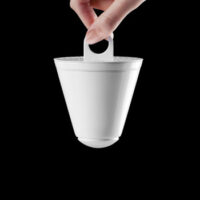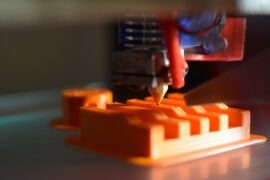As new iPhones and gadgets roll out, it’s easy to forget that there is a market out there that needs design in ways beyond what most people can fathom. From war zones to areas devastated by natural disasters among others, how can we as designers, engineers, and makers apply ourselves to look beyond our own means of living and innovate in ways that help those less fortunate than ourselves?
AU2012 Innovation Forum | Designing for a Better World
In this Autodesk University 2012 Innovation Forum, guests including Cameron Sinclair (CEO of Architecture for Humanity), Ethan Kay (managing director, Emerging Markets, Biolite), Eve Blossom (founder, Lulan), and others discuss what it means to design for emerging markets in 2012, and how as designers we can band together to create real solutions for those in need:
Cameron Sinclar, co-founder and “chief eternal optimist” (CEO), Architecture for Humanity

“It’s about creating resiliency. Resiliency is not by chance it’s by design”
“When we talk about resiliency it’s not just the structure.”
“The most important start is to design ourselves out of a job. We’re here to empower and
encourage ownership . . .”
“There are a million ideas to change the world, but unless you build it, it doesn’t matter.”
“The idea is to do urban acupuncture. You find the area where the project will do the most good
and you go in there.”
“There are a million of ideas to change the world, but unless you build it, it doesn’t matter.”
“Obesity rates have skyrocketed so much so that this generation is estimated to die 5 years
earlier than their parents.”
Ethan Kay, managing director, Emerging Markets, Biolite

“3 billion people cook their meals on indoor open fires.”
“Indoor air pollution kills more people in developing countries than AIDs. Half of these 2 million
deaths are children under 5. It’s the equivalent of smoking two packs of cigarettes a day.”
“Smoke from these fires contains black carbon – the second leading cause of global warming.”
“What I saw in the months I spent in rural India is that for technology to work it has to be
culturally appropriate.”
“In order to design solutions for any community, it’s important to understand local users and
their beliefs, and cultural practices.”
“If we do this intelligently, we can solve some the world’s most serious problems.”
“I’m just a guy from Ohio who has trouble making grilled cheese sandwiches.”
Eve Blossom, founder, Lulan

“I would encourage any designer to use design to make a better world.”
“All our systems are broken and design is the skill set that the world needs today.”
“Design can fundamentally change the building blocks of business.”
“Social change designers can be found anywhere and everywhere. They can be inside small
companies or large organizations.”
“I learned that artisans are at risk of human trafficking because their income level is below the
poverty level.”
“As a designer, I wanted to leverage my expertise where it really aligned with who I was and in a
way that I could really help these communities. I learned that I could address this issue in ways
that I never thought possible. As a business woman, I realized that underutilized artisans are
perfect to start a business.”
“We really push design as much as possible so that we can get into sophisticated markets with
many different product types.”
“We partner and collaborate with our artisans. This isn’t a supply chain; it’s a relationship chain.
We collaborate, share ideas and diversify risk to keep the business stable.”
“This is about what business can do to impact these huge social issues that we have. I believe
the way to do it is through business.”
“we’ve is a design centric e-commerce community that changes the relationship between
designers, buyers and artisans.”
Gia Schneider, chairman and chief executive officer, Natel Energy

“Design is a culture of continuous improvement.”
“It’s important for us as designers to take our skills and address the major issues of our time. I
would challenge and encourage you to match our passion and skills in design to the passion we
feel for human development and our planet.”
“Design is first and foremost a discipline focused on function. If it doesn’t work your design
has failed. However we do want to deliver multiple benefits, so a good design addresses one
solution, but a great design addresses multiple solutions.”
“EcoSmartHydro aims to achieve three things – support ecosystems, produce low-cost power
and support other uses.”
“There’s quite a bit of potential that remains to be developed with hydropower.”
“Conventional hydro power has been around for hundreds of years, and carries with it quite a
bit of negative baggage. So when thinking about how to do it better, we wanted to focus on the
outcomes, preserve or enhance optionality, minimize impacts…”
“Hydropower as it’s conventionally done is not always the best thing. Conventional technology
has always optimized around pressure and the result of that is that in order to implement
technology cost effectively we build big dams. “





![6 Types of Civil Engineering Drawings [Detailed Guide]](https://www.solidsmack.com/wp-content/uploads/2023/12/Civil-Engineering-Drawings-270x180.jpeg)
